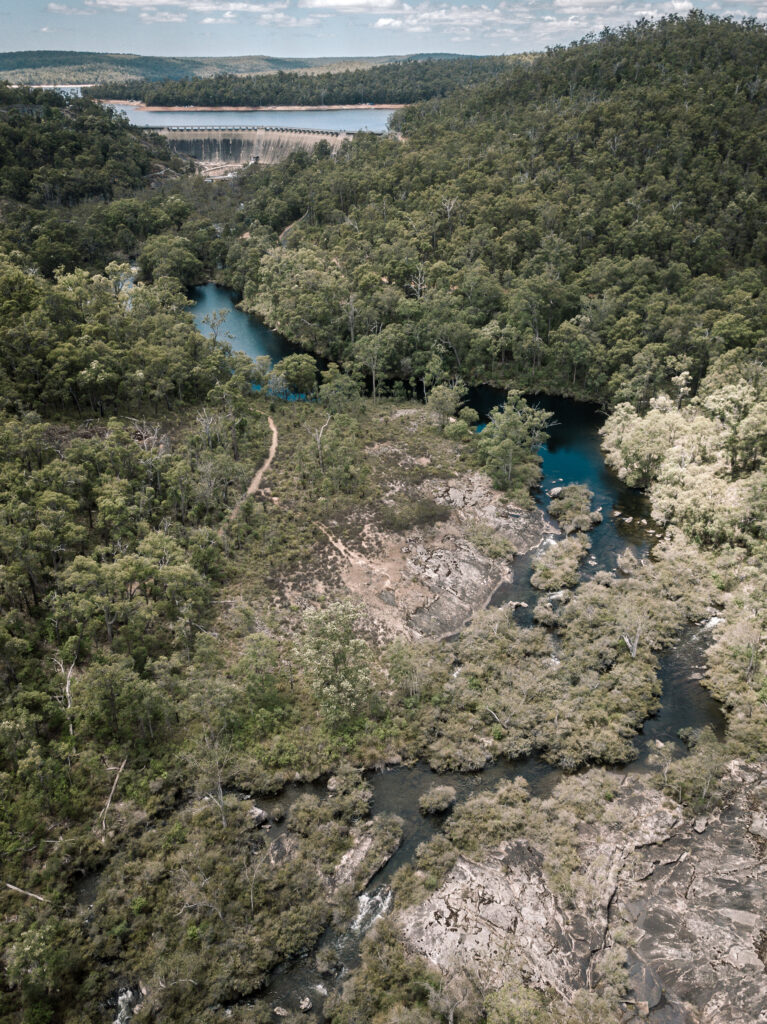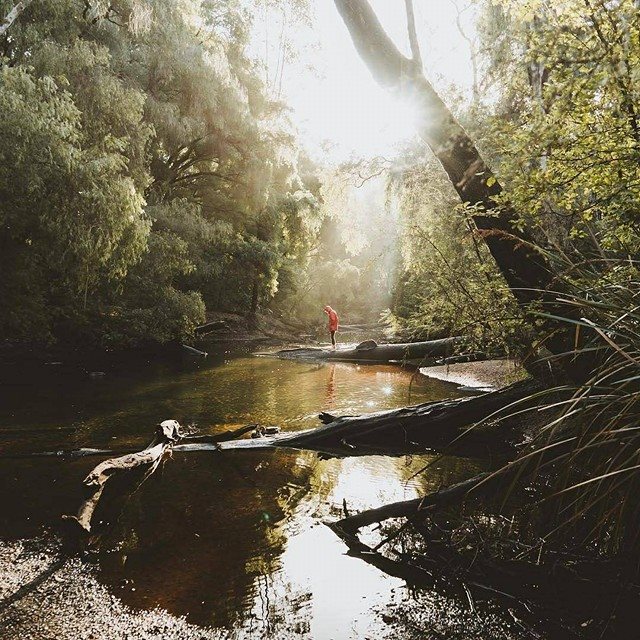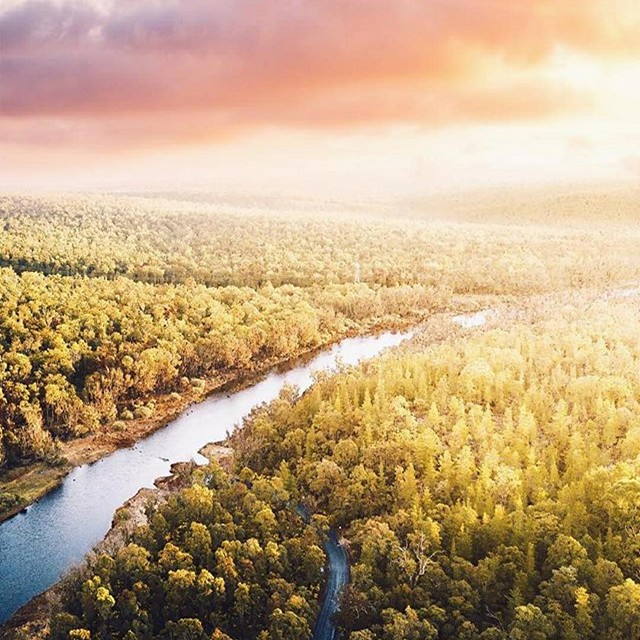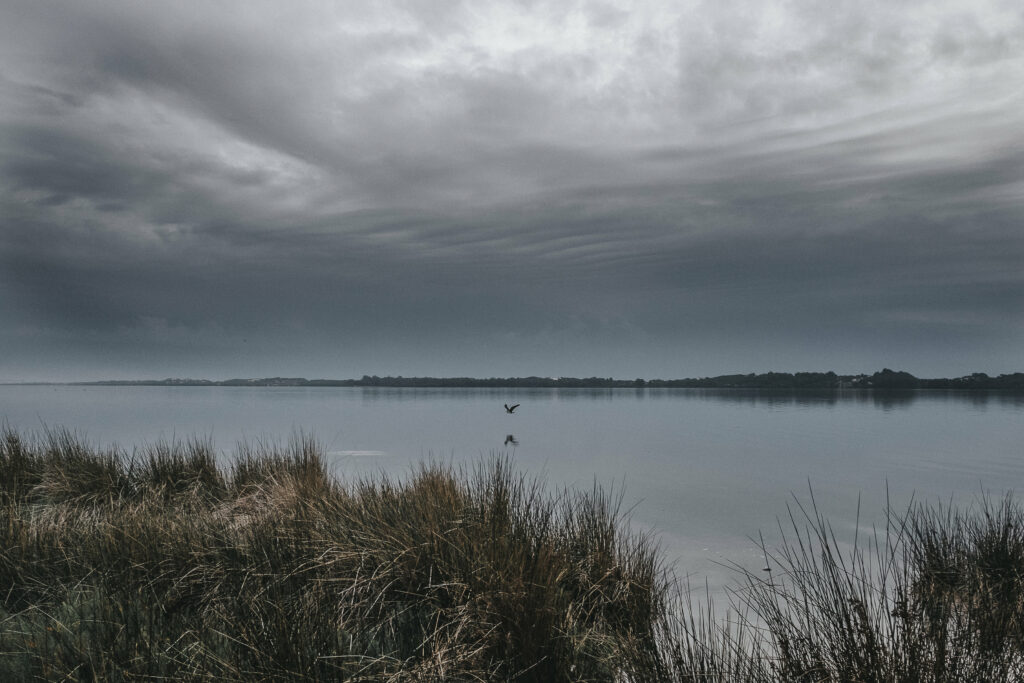BunGeo is home to a whopping four national parks and a conservation park, including the Wellington National Park, Greater Preston National Park, Tuart Forest National Park, and Leschenault Peninsula Conservation Park.
From the beach to the forest, everyone should experience each adventure-nature haven at least one. Plan a road trip now!



We share this gem with the Margaret River region. The narrow strip of Tuart (Eucalyptus gomphocephala) forest that links Capel and Busselton is one of the special places of the South-West. Tuart Forest National Park protects the largest remaining pure forest of Tuart in the world. It also has the tallest and largest specimens of Tuart trees on the Swan Coastal Plain. Some trees are more than 33 metres high and 10 metres in girth. There is also a thriving community of fungi, including some species yet to be named. The park also protects WA's largest remaining wild population of the endangered western ringtail possum. This is largely because old Tuart trees contain many hollows, while the dense secondary storey of peppermint supplies their major source of food. The forest is also home to the densest population of brushtail possums ever recorded in the State. Other residents include the brush-tailed phascogale, bush rat, kangaroo, quenda (also known as the southern brown bandicoot), at least 11 species of birds of prey and nocturnal birds. Adjoins the Ludlow State Forest.
Part of the old-growth forests south of Collie, the Greater Preston National Park is split into two areas of about 6 000 hectares each. The park is dominated by Jarrah, but has a mix of forest types, including old growth Jarrah, tall open Jarrah-Marri, and Swampy Banksia woodlands. The eastern part of the park is open Jarrah forest and wandoo woodland with dense shrublands in the valley floors which provide suitable habitat for native species such as tammar wallabies and woylies.
Predominantly in the Peel region, the Yalgorup is the largest national park on the Swan Coastal Plain extending just south of Mandurah to Myalup in the Harvey Region. It includes ten magnificent lakes and the famous Lake Clifton Thrombolites (one of the first life forms known on earth. Lake Preston extends 20 kilometres south to Myalup. The lakes that characterise the park lie in the depressions between a series of coastal dunes. Reflecting this underlying structure, the ten lakes of Yalgorup National Park form three distinct lines parallel to the coast. Lake Preston is extremely elongated and lies closest to the coast.

Leschenault Peninsula Conservation Park is just minutes from Australind and Bunbury yet feels like you are miles from civilisation. The Park is located on a thin peninsula, bounded on one side by the Indian Ocean and the Leschenault Estuary on the other. There is extensive peppermint and Tuart woodland behind the foreshore dunes, home to many Brushtail possums, and also some released Ringtail possums that are doing well. The park is very popular for aquatic recreation such as snorkelling & diving. There are long beaches with ample opportunity for fishing. There is camping within the park at the Belvidere camping area. Fees apply.
The region is has a plethora of state forest including, Harris River, Mumballup, Muja, Mullalyup, Myalup state forests and Lane Pool Reserve.
For further information on walking, camping and park updates please visit waparks.com.au or contact a BunGeo Visitor Centre.
Imagery: Johanna Resta Photography, @skyvizaerialphotography – @chelsea.cecilia @tyron_massara, @levicaleballan, @joshuadiong , @tomhoy_
Copyright © 2025 Visit Bunbury Geographe | All Rights Reserved
Site designed by Jack in the Box & built by Pixel Smith Studio




